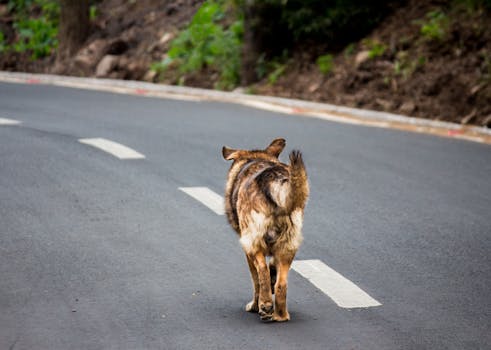
A Lost Pet’s Quest to Find Its Way Home
Introduction
Lost pet’s quest to find its way home is a situation that no pet owner wants to face. However, it’s a reality that many animals and their owners have to deal with every year. According to the ASPCA, approximately 6-8 million companion animals enter animal shelters in the United States each year. This staggering number highlights the importance of pet identification, proper pet care, and animal rescue efforts. In this article, we’ll delve into the journey of a lost pet and what can be done to prevent such situations and increase the chances of a happy reunion.
The Journey of a Lost Pet
Lost pet’s quest to find its way home can be a long and arduous one. When a pet becomes lost, it can become disoriented and scared, leading to a range of behaviors that can either help or hinder its chances of being reunited with its owner. Some lost pets may try to find their way back home, while others may become trapped or injured. The journey of a lost pet can be fraught with danger, from navigating unfamiliar terrain to avoiding predators and harsh weather conditions.
The emotional toll of being lost can also be significant for pets. Many lost animals experience stress, anxiety, and fear, which can weaken their immune system and make them more susceptible to illness and disease. As a result, it’s essential for pet owners to take proactive steps to prevent their pets from becoming lost and to be prepared in case their pet does become lost.
Preventing Lost Pets and Increasing the Chances of a Happy Reunion
There are several steps that pet owners can take to prevent their pets from becoming lost and to increase the chances of a happy reunion if their pet does become lost. Some of these steps include:
- Microchipping: Microchipping is a simple and effective way to identify your pet and increase the chances of a happy reunion. A microchip is a small device that’s implanted under your pet’s skin and contains a unique identification number that can be read by a special scanner.
- Identification Tags: Identification tags are another way to identify your pet and provide contact information in case your pet becomes lost. Make sure your pet’s identification tags are up-to-date and include your current contact information.
- Spaying/Neutering: Spaying or neutering your pet can reduce the likelihood of your pet becoming lost. Intact animals are more likely to roam in search of a mate, increasing the risk of becoming lost.
- Providing a Safe and Secure Environment: Providing a safe and secure environment for your pet can reduce the risk of your pet becoming lost. Make sure your pet’s enclosure or yard is secure, and consider investing in a GPS tracking device to monitor your pet’s location.
Conclusion
A lost pet’s quest to find its way home is a heartwarming and often challenging journey. By taking proactive steps to prevent your pet from becoming lost and being prepared in case your pet does become lost, you can increase the chances of a happy reunion. Remember to microchip your pet, provide identification tags, spay or neuter your pet, and provide a safe and secure environment to reduce the risk of your pet becoming lost.






